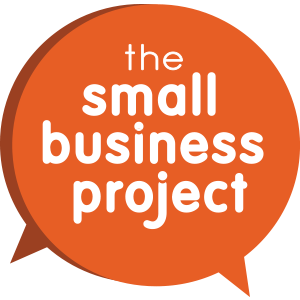Is a Rise in Confidence Leading to a Rise in SME Entrants?
Hampshire Trust Bank and The Centre for Economics and Business Research recently released some research into SME entrants in the UK since 2010. The report broke results down into sectors and found the three sectors which demonstrated the highest growth were technical and professional (39%), information and communication (33%) and business services (25%). Some of the other key findings also include:
The services sector witnesses a 19% increase in SME entrants in the sector
Overall, UK SMEs see a 17% rise in new entrants since 2010
Services SMEs show strong levels of confidence in their sector
It seems that the sectors with the highest number of start-ups entrants are also feeling more confident about the long-term economic prospects of the industry they operate in. Three in five (59%) accountancy and IT and communication firms say they feel optimistic. By comparison, 57% of medical and health services SMEs feel confident about the future, 5% higher than the national average.
Stuart Hulme, Director of Savings at Hampshire Trust Bank, said: “According to our latest UK SME Savings Tracker report, services SMEs, namely health and medical firms, have a significant amount of cash in business savings accounts, which is encouraging and we believe shows that these organisations are confidently planning for their future.
“Our SME Growth Watch report highlights the vital contribution of SMEs both within the services sector and indeed across all sectors to the UK economy, and the rapid level of growth being demonstrated by some of the nation’s smallest businesses. These figures should be viewed as encouraging for the government, demonstrating the widespread resilience and ambition of UK SMEs.
“At Hampshire Trust Bank we provide consistently competitive business savings accounts...
Making An Innovative Idea Global
Offering a solution to a problem is often where a start-up idea begins. To become a disruptor or offer a product or service that’s truly unique the idea has to be fresh, innovative and well-considered. In this article we’re going to take a quick look at an excellent example of a start-up that is disrupting on a global scale.
A Truly Disruptive Idea
What3words began when Chris Sheldrick travelled the world touring as a classical musician. He discovered that there are many areas across the world without an official address system. Home locations would be described along the lines of “past the hairdresser, four houses down on the left, between the pump and the bush” leaving visitors, deliveries and even firefighters struggling to reach their destination. For those who have travelled to areas of the world where this is an issue, such as sub-Saharan Africa, Mongolia, Costa Rica and the favelas of Brazil, you may understand why this is such an issue. Those who haven’t, you may never have even realised this was a problem that existed.
What what3words does is assign a three-word combination, like “table fork spoon,” to every three-meter square across the globe. There is no time and resource wasted trying to pinpoint exact locations of homes and doors, or any complicated latitude and longitude coordinates. This provides any and every area of the globe an ‘address.’
Consumers can use the what3words app for free for navigation, but their developer software is licenced out as a revenue stream. Courier services in Brazil are using what3words to bring e-commerce to the favelas for example. The start-up has also partnered with a number of humanitarian agencies across the world, such as Diaconia, a microfinance subsidiary of Norwegian NGO Mission Alliance. People living in Liberia without...
A guide to millennial marketing
The millennial market is growing fast. Businesses must be switched on in terms of their marketing tactics to capitalise on the huge buying power of this generation.
A recent study by the University of Southern California showed that there are 87.5 million millennials in the USA alone (ages 18-29). In comparison, 83.7 million people are known as ‘Generation X’ (ages 30-49) and 66.4 million are ‘baby boomers’ (ages 50+).
The study, conducted by the university’s Online Master of Science in Applied Psychology programme looked at the psychology businesses must leverage in order to successfully market to this growing demographic.
The millennial marketing influence lies mainly through the internet and digital devices such as laptops and smartphones, as the below excerpt from USC’s infographic shows. With over a quarter of millennials are highly social and engaged online – in comparison to just 15% of the baby boomer generation – brands that are not prioritising their digital marketing efforts in order to target this generation definitely should.
In addition, 85% of millennials own a smartphone and 78% own a laptop and/or computer, showing that its the best way to reach them with marketing campaigns. Millennials also make up the smallest percentage of magazine and newspaper readers and spend the least amount of time watching television or listening to the radio in comparison to other generations.
With almost 90% of millennials using social media, savvy brands are rapidly adapting to take advantage of this opportunity to influence. With 82% of millennials using social media interact with brands or retailers and 38% using it to discover new ones, online brand engagement is reaching an all...
